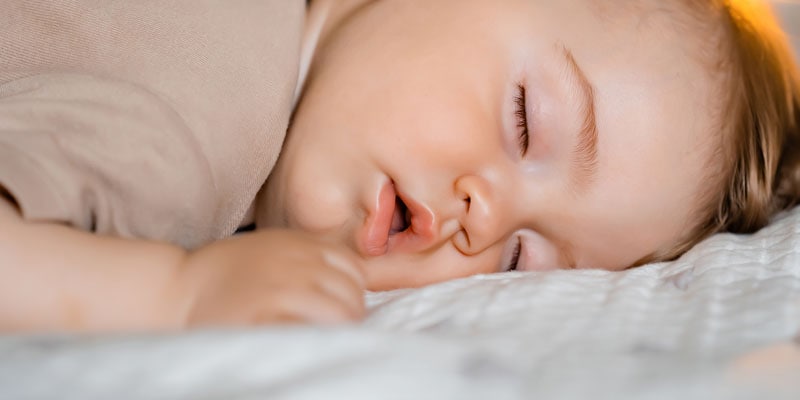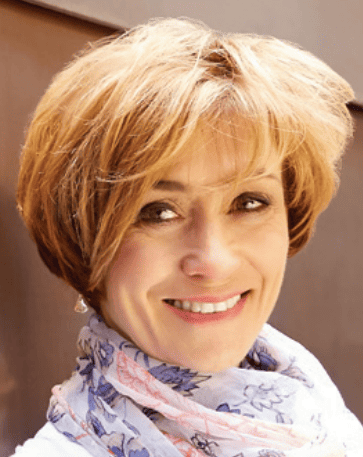Sharon Moore says that sleep disorders in children impact every part of their development, and dentists can play a big part in ensuring that every child gets the sleep they need.
 by Sharon Moore
by Sharon Moore
I will start by saying ‘there is literally nothing good about bad sleep.’ We all suffer from poor sleep from time to time and the inevitable brain fog the next day. However, when insufficient quantity or quality of sleep is a consistent feature, there are consequences, irrespective of age. It is not a good sign.
Since Sleep-Wrecked Kids was first published in 2018, the subsequent research makes it sound like children’s sleep problems are getting worse, not better. I will share some of this new research. However, I see the increase in studies as a reason to be hopeful. More research means increasing awareness of both the prevalence and gravity of sleep problems in children. As the academic and medical world take poor sleep seriously, my hope is that this thinking will extend to parents and families, who are in the perfect position to be the lifeguards of their children’s sleep and transform their long-term outcomes. All sleep problems irrespective of cause or severity, benefit from early identification and treatment.
“All sleep problems benefit from early identification and treatment.”
When I first published Sleep Wrecked Kids in 2018, I wrote about the many possible causes of sleep problems, some easy to fix with tweaks in the home, others requiring professional expertise. I wrote that up to twenty-four per cent of all children, and thirty-five per cent of children under two years of age, have frequent problems sleeping.1 Six years later, multiple studies show that we continue to face a global sleep-health crisis.
The ‘real’ figures are thought to be much higher. Further, over eighty per cent of sleep problems are going undetected in children.
The 2019 Parliamentary Enquiry into Sleep Health of Australians found that thirty-five percent of children snore, a figure somewhat higher than the oft-quoted median statistic of habitual snoring of ten to twelve per cent and up to twenty-seven percent of children affected.2
Regardless of whether sleep problems are due to poor sleep health practices or diagnosable sleep disorders, they impact every domain of a child’s development: physical, mental, social and emotional. Kids with insufficient sleep showed smaller grey matter volume that lasted for two years.3 We cannot train kids to need less sleep. We simply need to ensure they get good sleep.
If we look at breathing issues that affect sleep and how they affect behaviour, a study in 2021 by the University of Maryland School of Medicine on 10,000 pre-adolescent kids showed that ‘children who regularly snore (three or more times per week), have structural changes in their brain that may explain the associated behavioural problems including lack of focus, hyperactivity, and learning difficulties at school.’4
When kids snore, even in the absence of hypoxic events, it disrupts sleep cycles resulting in behaviour, thinking and learning deficits the next day and further into the future.5 In fact, snoring is common among children who have ADHD, and up to twenty-five per cent of these children may have obstructive sleep apnoea (OSA).6
After insomnia, SDB is the second-most prevalent sleep disorder, with clear links to development of chronic inflammation. Recent studies also indicate that cerebrovascular diseases and processes of atherosclerosis originate in childhood and are largely influenced by chronic inflammation.7,8
From a mental perspective, multiple studies show alterations in brain function, growth and development, related to untreated SDB that have short and long-term consequences; neuro-behavioural and neuro-cognitive.9-12 Perhaps the most illuminating studies are those that show a reduction of brain matter with SDB that may account for the known behavioural and cognitive challenges.13,14
A 2022 paper outlines the relationship of SDB and poor craniofacial growth, stressing the important role of general and paediatric dentists as part of a multidisciplinary team consisting of a pediatrician, ENT specialist, orthodontist, allied health professional, myofunctional therapist, and sleep medicine physician to manage all the downstream effects of abnormal anatomy and function that can lead to SDB.15-18
Dentists may identify the anatomical and other possible factors related to sleep disruption that may be correlated to increased airway collapsibility. Dentists can provide ongoing monitoring of craniofacial development in young children as part of regular dental care. Dentists can recognise and help prevent abnormal anatomy and function that are risk factors for SDB.
The ramifications of early sleep problems can follow children later in life with a 20-year follow up study showing that adults with a history of severe childhood OSA have a high risk of snoring, elevated body mass index, and lower academic achievement in adulthood along with increased risk of chronic diseases later in life.19 Further, in addition to learning and behaviour problems, speech and language difficulties are common in children with SDB which have significant effect on education and social outcomes.20
It is an exciting time to be involved in the world of sleep medicine.
Whilst the fundamental messages conveyed from the research, foresee much doom and gloom, they are in fact messages of great hope, because there is much that can be done to ensure every child gets the sleep they need every night to be healthy and happy. Our kids can’t afford to wait.
Editor’s note: This was first published as the preface for her book Sleep Wrecked Kids Japanese translation. Used with permission.
Some sleep disorders in children can be treated with myofunctional therapy. Read “Face Facts: Function that Builds the Airway,” by Sharon Moore here: https://dentalsleeppractice.com/face-facts-function-that-builds-the-airway/
- Olivero Bruni, ‘Insomnia: Clinical and Diagnostic Aspects’, World Sleep Society Conference (Prague, 2017).
- Parliament of the Commonwealth of Australia: House of Representatives Standing Committee on Health, Aged Care and Sport. Inquiry into sleep health awareness in Australia, Hansard Hearing Melbourne, Hansard transcript. February 6, 2019.
- Children Who Lack Sleep May Experience Detrimental Impact on Brain and Cognitive Development That Persists Over Time Neuroscience, July 31, 2022
- Isaiah, A., Ernst, T., Cloak, C.C. et al. Associations between frontal lobe structure, parent-reported obstructive sleep disordered breathing and childhood behavior in the ABCD dataset. Nat Commun 12, 2205 (2021). https://doi.org/10.1038/s41467-021-22534-0
- Csábi, E., Gaál, V., Hallgató, E. et al. Increased behavioral problems in children with sleep-disordered breathing. Ital J Pediatr 48, 173 (2022). https://doi.org/10.1186/s13052-022-01364-w
- Yoo Hyun Um, Seung-Chul Hong and Jong-Hyun Jeong, ‘Sleep Problems as Predictors in Attention-Deficit Hyperactivity Disorder: Causal Mechanisms, Consequences and Treatment’, Clinical Psychopharmacology and Neuroscience 15, no. 1 (2017): 9–18, https://doi.org/10.9758/cpn.2017.15.1.9.
- Hertiš Petek T, Petek T, Močnik M, Marčun Varda N. Systemic Inflammation, Oxidative Stress and Cardiovascular Health in Children and Adolescents: A Systematic Review. Antioxidants (Basel). 2022 Apr 30;11(5):894. doi: 10.3390/antiox11050894. PMID: 35624760; PMCID: PMC9137597.
- Kheirandish-Gozal L, Gozal D. Obstructive Sleep Apnea and Inflammation: Proof of Concept Based on Two Illustrative Cytokines. Int J Mol Sci. 2019 Jan 22;20(3):459. doi: 10.3390/ijms20030459. PMID: 30678164; PMCID: PMC6387387.
- Brockmann PE, Gozal D. Neurocognitive Consequences in Children with Sleep Disordered Breathing: Who Is at Risk? Children (Basel). 2022 Aug25;9(9):1278. doi: 10.3390/children9091278. PMID: 36138586; PMCID: PMC9497121.
- Isaiah, A., Ernst, T., Cloak, C.C. et al. Associations between frontal lobe structure, parent-reported obstructive sleep disordered breathing and childhood behavior in the ABCD dataset. Nat Commun 12, 2205 (2021). https://doi.org/10.1038/s41467-021-22534-0
- Harding R, Schaughency E, Haszard JJ, Gill AI, Luo R, Lobb C, Dawes P, Galland B. Sleep-Related Breathing Problem Trajectories Across Early Childhood and Academic Achievement-Related Performance at Age Eight. Front Psychol. 2021 Jun 29;12:661156. doi: 10.3389/fpsyg.2021.661156. PMID: 34267700; PMCID: PMC8276242.
- Menzies B, Teng A, Burns M, Lah S. Neurocognitive outcomes of children with sleep disordered breathing: A systematic review with meta- analysis. Sleep Med Rev. 2022 Jun;63:101629. doi: 10.1016/j.smrv.2022.101629. Epub 2022 Mar 31. PMID: 35439720.
- Moon C, Melah KE, Johnson SC, Bratzke LC. Sleep-disordered breathing, brain volume, and cognition in older individuals with heart failure. Brain Behav. 2018 Jul;8(7):e01029. doi: 10.1002/brb3.1029. Epub 2018 Jun 19. PMID: 29920994; PMCID: PMC6043704.
- Philby MF, Macey PM, Ma RA, Kumar R, Gozal D, Kheirandish-Gozal L. Reduced Regional Grey Matter Volumes in Pediatric Obstructive Sleep
- Tiina Ikävalko, Matti Närhi, Aino-Maija Eloranta, Niina Lintu, Riitta Myllykangas, Anu Vierola, Henri Tuomilehto, Timo Lakka, Riitta Pahkala, Predictors of sleep disordered breathing in children: the PANIC study, European Journal of Orthodontics, Volume 40, Issue 3, June 2018, Pages 268– 272, https://doi.org/10.1093/ejo/cjx056
- Heit T, Tablizo BJ, Salud M, Mo F, Kang M, Tablizo MA, Witmans M. Craniofacial Sleep Medicine: The Important Role of Dental Providers in Detecting and Treating Sleep Disordered Breathing in Children. Children (Basel). 2022 Jul 15;9(7):1057. doi: 10.3390/children9071057. PMID: 35884041; PMCID: PMC9323037.
- Saint-Fleur A.L., Christophides A., Gummalla P., Kier C. Much Ado about Sleep: Current Concepts on Mechanisms and Predisposition to Pediatric Obstructive Sleep Apnea. Children. 2021;8:1032. doi: 10.3390/children8111032.
- Hansen C., Markstrom A., Sonnesen L. Specific dento-craniofacial characteristics in non-syndromic children can predispose to sleep-disordered breathing. Acta Paediatr. 2022;111:473–477. doi: 10.1111/apa.16202.
- Nosetti L, Zaffanello M, Katz ES, Vitali M, Agosti M, Ferrante G, Cilluffo G, Piacentini G, La Grutta S. Twenty-year follow-up of children with obstructive sleep apnea. J Clin Sleep Med. 2022 Jun 1;18(6):1. PMID: https://pubmed.ncbi.nlm.nih.gov/35164899/
- Mohammed D, Park V, Bogaardt H, Docking K. The impact of childhood obstructive sleep apnea on speech and oral language development: a systematic review. Sleep Med. 2021 May;81:144-153. doi: 10.1016/j.sleep.2021.02.015. Epub 2021 Feb 16. PMID: 33677253.
 Sharon Moore is an author, speech pathologist and myofunctional practitioner with 40 years of clinical experience across a range of communication and swallowing disorders. Sharon has a special interest in early identification of craniofacial growth anomalies in children, concomitant orofacial dysfunctions, and airway obstruction in sleep disorders.
Sharon Moore is an author, speech pathologist and myofunctional practitioner with 40 years of clinical experience across a range of communication and swallowing disorders. Sharon has a special interest in early identification of craniofacial growth anomalies in children, concomitant orofacial dysfunctions, and airway obstruction in sleep disorders.


